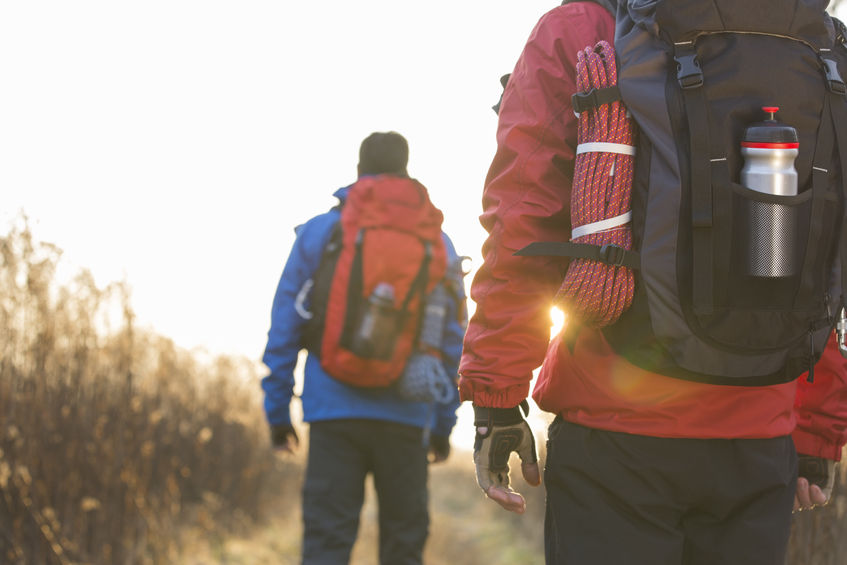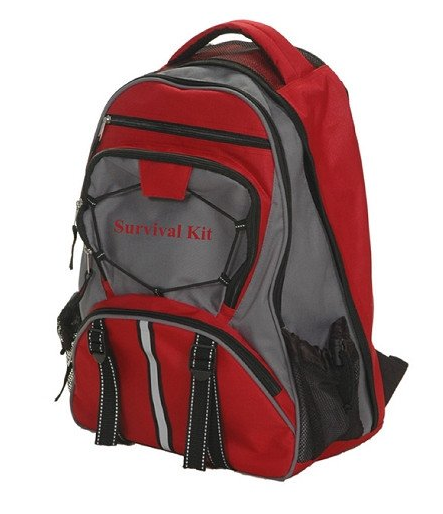 Clothing often gets lost in the shuffle when it comes to preps; after all, there’s food, water, shelter and self-defense to worry about, so the idea of how to dress for survival kind of gets pushed to the back burner.
Clothing often gets lost in the shuffle when it comes to preps; after all, there’s food, water, shelter and self-defense to worry about, so the idea of how to dress for survival kind of gets pushed to the back burner.
However, what most preppers don’t realize is that a major reason why people survive (or don’t) out there is because of their clothing choices.
Think of it – while you’re hard at work building a shelter, your clothes have already been working for hours at sheltering you from the wind, rain, snow, and sweat that have been accumulating. Your clothing can help keep you dry, warm, cool, well-insulated…whatever you need it to do. The trick is to pick the right types that’ll give you the most benefits in a survival situation.
I want to help make sure that each of you has the means necessary to survive out there; that’s why I wanted to share these helpful tips on…
How To Dress For Survival
1 – The Fabrics To Avoid:
-
Cotton
Cotton is one of the most popular clothing materials out there; and why wouldn’t it be? It’s soft, it’s warm, and the majority of clothing in stores are made (at least partly) from it. Plus, if you’re in a dry, warm location with low humidity, it’s one of the best fabrics out there for keeping you cool.
The major downfall with cotton, however, is its inability to keep you warm and dry once it gets wet. Whether you sweat a lot, got caught in a rainstorm, or fell into a lake, cotton can do nothing on its own to keep you warm. This is because the cotton soaks up the moisture rather than repelling it, and then sucks the heat from your body. You’ll be shivering in no time (and possibly catch hypothermia as a result).
Another thing with cotton – if it gets soaking wet, the sun’s rays can shine right through the fibers and it will no longer prevent you from getting sunburned. Something to keep in mind when you’re out in the sun!
Cotton is fine if you’re in a dry climate and are guaranteed to not get wet. If this isn’t the case, you’re better off without it.
-
Bamboo
Many preppers like bamboo fabrics, as they’re marketed to be a “green” product. However, they often spend much more money on them as a result, and, unfortunately, bamboo actually isn’t a great fabric to bring with you for survival clothing.
This is because many of these products are actually composed of rayon, a fabric that soaks up water and loses all of its insulation once it becomes wet (much like cotton and also wool). As a result, if you get caught in a rainstorm, you’re out all the money you spent, and now are struggling for warmth.
Unless you’re out and about on a normal day and doing little to no physical activity, you’re better off leaving the bamboo fabrics at home.
2 – What To Do With Layering
Most everybody knows that layering is important for survival; however, few people know how to do it correctly to gain the maximum benefits.
There are three essential layers you need in a survival situation – a layer to wick away sweat (closest to your skin), a layer to insulate you (middle layer), and finally an outer layer that repels water.
The reason for the first layer is to move (or “wick”) away moisture and sweat away from your skin. To do this, you’ll need a fabric that wicks the water away instead of absorbs it. Shirts made out of polypropylene are great for this, and are often marketed as “base layers.”
The insulation layer is next – this one is there to help keep you warm and keep that body heat from escaping. It should also be thicker than the base layer. Fabrics such as polyester, nylon and synthetic fleece work great for this.
Note: You may think wool is a great option for this due to its excellent insulation ability, but keep in mind it is very heavy and basically useless when it gets wet.
The last layer should provide an outer shell around your body, protecting you from the wind and rain. It should be waterproof/windproof, yet should still be breathable. Windbreakers are excellent options for this.
3 – Miscellaneous Tips
- If your base layer becomes wet and you start to get cold, change into a dry base layer before adding on any other layers. This will help you get warmer much faster.
- Remove a layer before doing physical activity – your body will warm up much faster oftentimes than you think it will.
- Not sure how to wash your clothes off-grid? We wrote an article about it here.
- Try out your clothing ahead of time, and layer it as you would in a survival situation. This will give you practice in order to see which clothing articles work and which don’t.
- Always carry extra socks. Ones that wick away moisture are good (these can typically be found at running/athletic stores).
- Wear light colors; dark colors attract the sun’s rays and heat up much faster.
- Wear a hat, bandana, etc. to protect your head.
- Wear sunscreen when possible.
- Try to utilize clothing items that are versatile and can be used for multiple things.
Those are some of the basics when it comes to dressing for survival; here’s Black Scout Prepper with more in-depth info:
Whichever clothes you decide to bring with you, you need to make sure you put them in a roomy, affordable, lightweight and durable survival kit. That’s where our multi-pocket hiker’s backpack comes in.
This backpack is a survivalist’s/hiker’s dream – it’s got super comfortable padded shoulder straps to keep you going, as well as a convenient headphone hole to listen to music effortlessly. It’s also got lots of pockets to keep all your survival food, weapons, and clothing organized while you’re bugging out.
Plus, it’s super strong and durable, so it can handle all the survival gear you add to it. And at the super low price of only $29.99, it’s way more affordable than many of the overpriced backpacks/survival kits out there.
Grab this backpack today and hit the trail – it’ll help keep your survival food/gear warm and dry, no matter what circumstances you find yourself in. Click here or on the image below to get yours.



